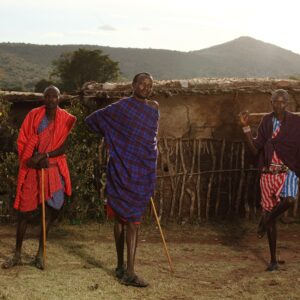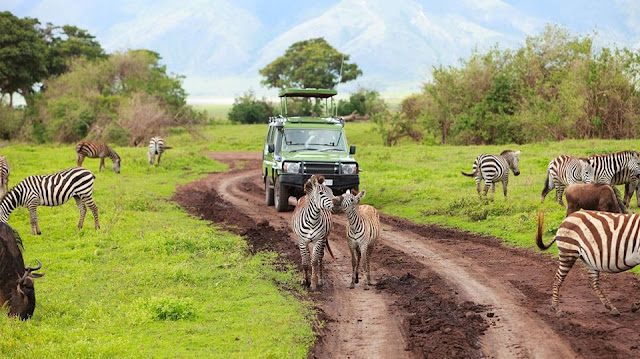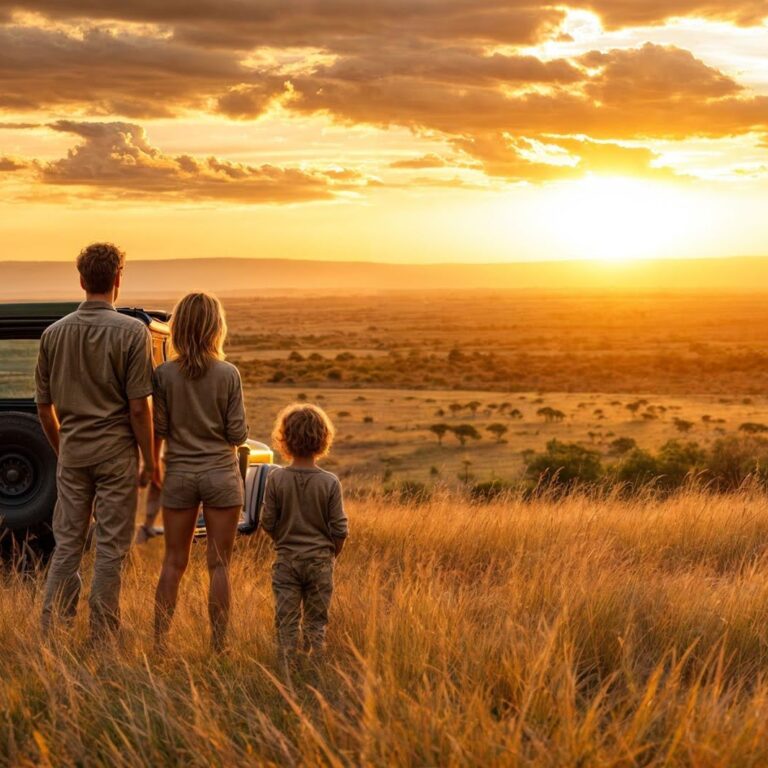What Gloves Do I Need to Climb Kilimanjaro?
Kilimanjaro. The name itself conjures images of snow-capped peaks, rugged volcanic landscapes, and the exhilarating challenge of reaching the “Roof of Africa.” As you prepare for this life-changing trek, every piece of gear becomes a critical component of your success and comfort. While the right boots and jacket often get the most attention, one of the most overlooked, yet vital, pieces of equipment is your handwear. The right gloves can mean the difference between a comfortable climb and one plagued by cold, numb fingers.
The key to a successful Kilimanjaro climb is layering, and this principle applies just as much to your hands as it does to your body. You’ll need a system of gloves to handle the drastic temperature changes you’ll experience, from the warm, lush rainforest at the base to the sub-zero, wind-whipped conditions of the summit. A single pair of gloves simply won’t cut it. The Ultimate Packing List For Kilimanjaro for your glove system should be a three-part symphony: a lightweight inner layer, a warm mid-layer, and a heavy-duty outer layer.
The First Layer: Lightweight and Versatile
This is your base layer, designed for the lower elevations where the temperatures are mild. These gloves offer a small amount of warmth and, crucially, dexterity. They’re perfect for the first few days of your trek, when you’re hiking through the rainforest and moorland. They allow you to easily use your trekking poles, adjust your pack, and take photos without exposing your hands to the elements.
Thin Fleece Gloves
A simple, no-frills option, thin fleece gloves are an excellent gloves for Kilimanjaro choice for your base layer. They provide a surprising amount of warmth for their weight and pack down to a negligible size. Look for a pair that fits snugly to maximize dexterity. They’re also great for wearing inside a warmer pair of gloves or mittens for an extra boost of insulation on colder days. Expedition climbing is hard on gear, and gloves are no exception the right Gloves for Kilimanjaro Hiking. In reality, even a well-made and expensive pair will only survive one expedition climb. Towards the end of a three-week trip, most of the gloves will have holes.
REI Flash Power Stretch Gloves
These are a step up from basic fleece gloves. Made with a blend of polyester and spandex, they offer excellent breathability and moisture-wicking properties, making them the best gloves for hiking mt kilimanjaro, essential for preventing sweaty hands that can quickly get cold. The “power stretch” fabric provides a form-fitting feel, and the touch-screen compatible fingertips are a huge bonus, allowing you to use your phone or camera without removing your gloves. For Mount Kilimanjaro, you need two pairs of gloves: thin liner gloves for the lower slopes and warm, waterproof, windproof outer gloves or mittens for summit night. Trekking poles are recommended to reduce joint strain and help with balance, with lightweight aluminum or carbon fiber models with quick-lock systems being good options.
The North Face Etip Glove
Similar to the REI Flash gloves, the North Face Etip gloves are a popular recommended choice for climbing Kilimanjaro choice to their dexterity and tech-friendly features. The U|R® Powered conductive technology on all five fingers allows for full use of touch-screen devices. They are designed for a comfortable, snug fit and are an ideal choice for the lower and middle elevations of your climb.
Tips: Climbing Mount Kilimanjaro is an achievable trek for most people, but it requires physical endurance and acclimatization for altitude sickness, with success depending on proper preparation, an essential gear packing list for climbing Mount Kilimanjaro, choosing a reputable tour operator, and selecting a suitable route and season. It is a non-technical climb, but the final summit push is extremely difficult due to altitude, requiring slow “pole pole” pacing and multiple layers of warm clothing to cope with cold, windy conditions.
The Second Layer: Warmth and Insulation
As you ascend higher and the temperatures begin to drop, your lightweight gloves won’t be enough. This is where your warm, mid-layer gloves come into play. These are typically thicker, more insulated gloves designed to provide substantial warmth without being overly bulky, the perfect gloves for climbing Kilimanjaro. You’ll be wearing these gloves on the colder trekking days and as a crucial part of your layering system for the final summit push.
REI Switchback GTX Gloves
These are a fantastic option for a warm, yet not overly bulky, mid-layer. The “GTX” stands for GORE-TEX, a waterproof and breathable membrane that is a game-changer on the mountain. The GORE-TEX will protect your hands from wind and moisture, and the insulation will keep you warm safety Gear should be brought to climb Mount Kilimanjaro. These gloves are durable and offer enough dexterity for most tasks, making them a reliable workhorse for your climb.
Recommended for Kilimanjaro Climbing Preparation (gear & equipment). Kilimanjaro, pack essential layers of breathable, quick-dry clothing, including moisture-wicking underwear and socks, fleece mid-layers, and waterproof outer shells for jackets and pants. Bring broken-in, sturdy waterproof hiking boots and camp shoes. Other crucial items include a warm down jacket, trekking poles, a headlamp with spare batteries, UV-blocking sunglasses, and a personal first-aid kit. A two-bag system is recommended: a daypack for daily essentials and a duffle bag for porters to carry other gear.
Black Diamond Guide Gloves
When you need serious warmth and durability, the Black Diamond Guide Gloves are a top-tier choice. These gloves are designed for alpine climbing and mountaineering. So they more than capable of handling Kilimanjaro’s challenging conditions. They feature a removable, insulated liner, which is a huge advantage, choosing the perfect gloves for climbing Kilimanjaro. You can wear the liner on its own for less intense cold, or combine it with the outer shell for maximum warmth. The outer shell is made of a tough, waterproof, and breathable material, ensuring your hands stay dry and warm.
The Third Layer: The Summit Push
This is your final line of defense against the brutal cold and fierce winds of the summit. You’ll be climbing in the dark, and temperatures can plummet well below freezing. A simple pair of gloves will not suffice. For the summit, you need the warmest, most protective handwear you can get. This is typically a pair of heavy-duty insulated mittens. Mittens are warmer than gloves because they allow your fingers to share body heat, keeping them from getting cold.
Black Diamond Mercury Mittens
These mittens a classic and highly-regarded choice for mountaineering and high-altitude climbs. They feature a removable insulated liner, allowing for versatility. The outer shell its constructed with a Pertex Shield fabric, making it highly waterproof and windproof. The insulation is a combination of PrimaLoft Gold and fleece, providing exceptional warmth even in the coldest conditions. The “mercury” mittens are an excellent choice for the summit push, ensuring your hands are protected from frostbite. The liner can also be worn inside the Black Diamond Guide gloves for an incredibly warm layering system.
The Often Forgotten: Sun Gloves
Wait, sun gloves for Kilimanjaro? Yes! As you ascend, you’ll be exposed to intense high-altitude sunlight. The sun’s rays are much stronger at higher elevations, and sunburn is a real risk, not just for your face, but for the backs of your hands as well. While they won’t provide warmth, a pair of lightweight, breathable sun gloves with a high UPF rating will protect your hands from sunburn, making them a smart and often overlooked addition to your gear list.
Nike Lightweight Gloves
While Nike lightweight gloves can work as liners or for lower altitudes, they are generally insufficient for the extreme cold of Kilimanjaro’s summit night, top recommended Gloves for Kilimanjaro. You will need a system of gloves, including lightweight gloves for the initial ascent, midweight gloves for varied conditions, and heavily insulated, waterproof heavyweight gloves or mittens for the summit. Materials like merino wool, Polartec, or synthetic fibers such as PrimaLoft are recommended over cotton, which performs poorly when wet.
Building Your Kilimanjaro Glove System
For Kilimanjaro, the best choice for cold hands is a layering system of liner gloves, insulated mittens or gloves, and waterproof/windproof over-mitts for summit night, using materials like wool or synthetics for liners and synthetic or down insulation for the mittens. You’ll need lighter, breathable, and moisture-wicking gloves for lower altitudes and more robust, waterproof, insulated gloves or mittens for the extreme cold and wind of the summit night. This guide will help you choose the best gloves for Kilimanjaro, ensuring your hands stay warm and functional throughout your trek. To successfully climb Kilimanjaro, you should plan to bring at least three pairs of gloves:
A lightweight pair: For the lower elevations and general camp use. (e.g., REI Flash, The North Face Etip)
A warm, insulated pair of gloves: For the middle and upper sections of the climb, and for wearing under your mittens on the summit. (e.g., REI Switchback GTX, Black Diamond Guide Gloves)
A pair of heavy-duty mittens: Specifically for the summit push. Where extreme cold and wind are a factor. (e.g., Black Diamond Mercury Mittens)
Tips for Choosing the Best Gloves for Climbing Kilimanjaro
Choosing the right gloves for your Kilimanjaro climb its crucial for comfort and safety. As temperatures can drop significantly, especially at higher altitudes. Here are 10 tips to help you make the best choice:
Layering is Key: Don’t rely on a single pair of gloves. Plan for a layering system that includes thin liner gloves, a warmer mid-layer (like fleece or softshell gloves), and a waterproof/windproof outer shell (mittens or heavily insulated gloves).
Assess Temperature Ranges: Kilimanjaro presents a wide range of temperatures. At the base, it can be warm. But at the summit, temperatures can plummet well below freezing, often with strong winds. Your glove system needs to accommodate this entire spectrum.
Prioritize Waterproofing and Windproofing: The outer layer of your gloves should be fully waterproof and windproof. Look for materials like Gore-Tex or similar proprietary membranes to protect against rain, snow, and biting winds. Read this: The ultimate guide to hygiene on Kilimanjaro expeditions.
Consider Insulation Type: Down insulation offers an excellent warmth-to-weight ratio but loses insulating properties when wet. Synthetic insulation (like Primaloft or Thinsulate) performs better when damp and dries faster. Making it a reliable choice for Kilimanjaro’s unpredictable weather.
Maintain Dexterity: While warmth is paramount, you’ll still need to perform tasks like zipping up your jacket, adjusting straps, or handling trekking poles. Liner gloves and certain mid-layer gloves offer better dexterity than bulky mittens. Read this: Kilimanjaro Gear List – Recommendations For Clothing List, Packing List
Ensure Proper Fit: Gloves that too tight will restrict blood flow and make your hands colder. Gloves that are too loose will allow cold air to enter and reduce insulation. Try them on with any liner gloves you plan to use.
Check for Features: Look for features like wrist leashes (to prevent losing them in high winds), nose wipes, adjustable cuffs to seal out snow, and reinforced palms for durability when using trekking poles.
Mittens for Summit Day: For summit night, when temperatures most extreme. A good pair of insulated, waterproof mittens often warmer than gloves, as your fingers can share warmth. Consider them essential for the final push.
Test Them in Cold Conditions: If possible, test your chosen glove system in cold conditions before your trip. This will give you a realistic idea of their warmth and comfort.
Pack a Backup Pair: Always carry at least one extra pair of gloves. Especially a waterproof outer layer. Gloves can get wet, lost, or damaged, and having a spare is a critical safety measure. Read this: 10 Items For Climbing Kilimanjaro That Aren’t on the Gear List
This layering system will ensure you’re prepared for the full range of weather conditions on Kilimanjaro. Remember, your hands are critical for your safety and comfort on the mountain. Don’t skimp on this essential piece of gear. And you’ll be one step closer to a successful and unforgettable summit. Read this: What To Wear When Climbing Kilimanjaro
What Gloves Do I Need to Climb Kilimanjaro?
For climbing Kilimanjaro, you need a layering system of gloves. Including lightweight inner liners for general warmth and warmth. Insulated, waterproof outer gloves or ski mittens for the extremely cold summit night. Materials like merino wool or synthetics for liners, and waterproof Gore-Tex or insulated synthetic materials (such as PrimaLoft or Thinsulate) for outer gloves. Ideal for handling the varying temperatures and wet conditions encountered during a climb. You can find the best gloves for Climbing Kilimanjaro prices by searching individual product names online, reviews are on outdoor gear retailers, and photos are available on hiking gear sites and our travel blogs. Read this: Tips for Staying Warm on the Summit of Kilimanjaro
Mittens vs. Gloves:
Mittens keep hands warmer by grouping all fingers in one compartment, sharing heat and reducing exposed surface area. Making them ideal for extreme cold, while gloves offer superior dexterity with separate finger sheaths. Making them better for intricate tasks and less frigid conditions. The choice between mittens and gloves depends on the priority of warmth versus finger mobility and the specific weather conditions and activities.







